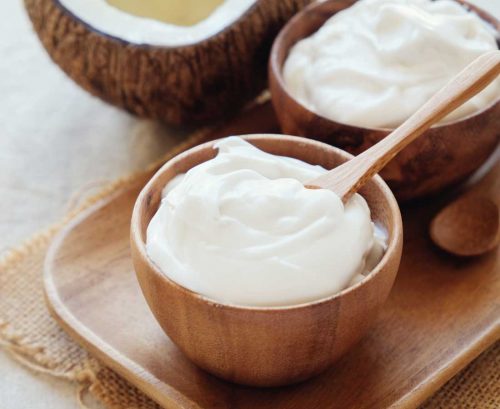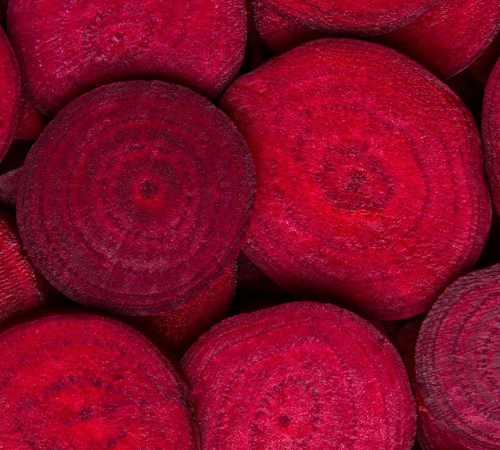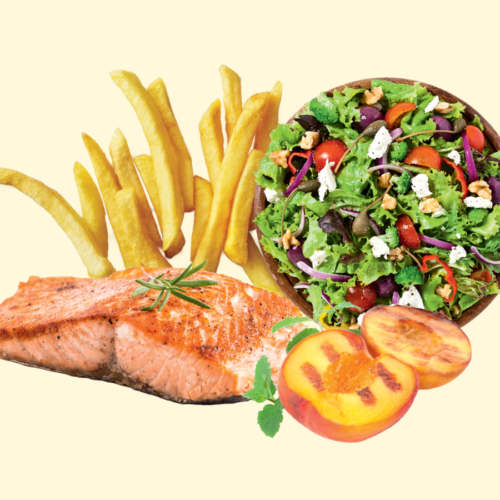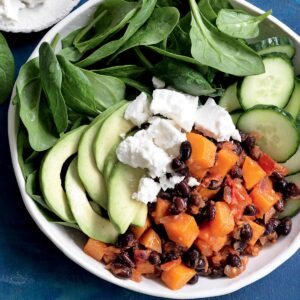
With many people now choosing to go dairy free because of allergies, intolerance or ethical reasons, the market for alternatives, such as coconut yoghurt, is growing quickly. HFG dietitian Melissa Meier investigates whether dairy-free yoghurts are as healthy as regular yoghurt, and shows what to look for when making your choices.
With its creamy texture, gut-friendly bugs and high calcium content, yoghurt hits the spot. Dairy-free yoghurt is starting to grab the spotlight from its trad cousin — but before you make the switch, here’s what you should know.
Why go dairy free?
People can often choose to avoid dairy because they’re lactose intolerant, are allergic to cow’s milk protein (this generally affects infants and young children), or to alleviate distressing gut symptoms. Alternatively, they could be following a paleo diet, or pursuing a plant-based or vegan way of eating.
What’s available?
Coconut yoghurt
This trendy yoghurt is made mostly from coconut milk, which is high in fat for a creamy mouthfeel. They’re virtually void of protein. Some brands add sugars and thickeners.
Nut yoghurts (almond or cashew)
Surprisingly, some nut yoghurts contain as little as 9 per cent nuts, with the rest made up of water, thickeners, vegan cultures — and often sugar.
Coconut, almond & cashew yoghurt
These are similar to the nut yoghurts above, with the addition of coconut milk.
Oat yoghurt
Oat milk forms the main ingredient. The yoghurt includes nuts and pea protein and is only available flavoured.
Soy yoghurt
This original non-dairy alternative is the closest nutritionally to dairy yoghurt for carbs, protein and calcium. It also includes probiotics.
Does dairy free have drawbacks?
Around seventy-five per cent of us already don’t reach our recommended bone-friendly calcium requirements. Coconut and nut dairy-free yoghurt varieties lack bone-strengthening calcium and are low in protein, while the coconut varieties tend to be higher in kilojoules/calories and saturated fat.
If you’ve taken dairy off the menu, you need to reconsider what else you’re eating to make sure your bones aren’t missing out.
What’s in the tub?
Want to know what’s actually in your yoghurt pot? It’s a good idea to check out the ingredients list. Ingredients are always listed in descending order by weight, from most to least. Ideally, the first ingredient should be a whole food such as soybeans, coconut, nuts or oats. Be warned, however: some alternative yoghurts have a very long ingredients list compared to dairy-based yoghurts — which are often purely milk and probiotic cultures.
A number of dairy-free varieties are vastly different from dairy-based yoghurts. Sometimes high in fat, they do not offer much at all nutritionally in terms of vitamins, minerals, protein or calcium.
So what’s the verdict?
If you eat yoghurt daily and enjoy your current dairy-containing yoghurt brand, there is no need to switch. Doing so could diminish your calcium intake, decrease your protein and boost your fat intake. But if you’d like an occasional change, watch the portion sizes of these alternatives — especially if you’re choosing one of the higher-fat, coconut-based yoghurts.
www.healthyfood.com










